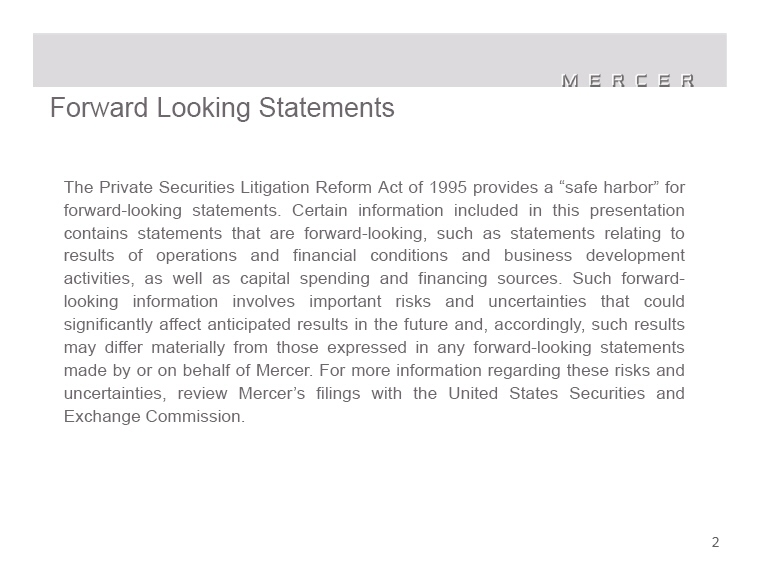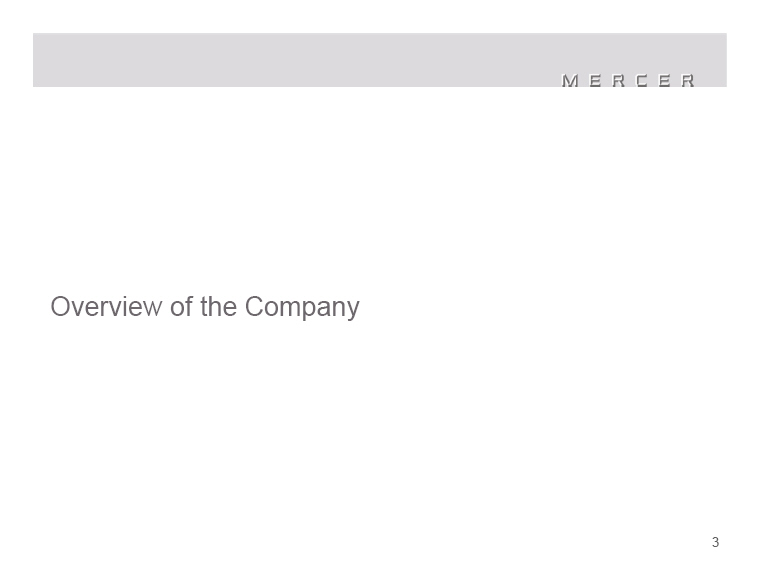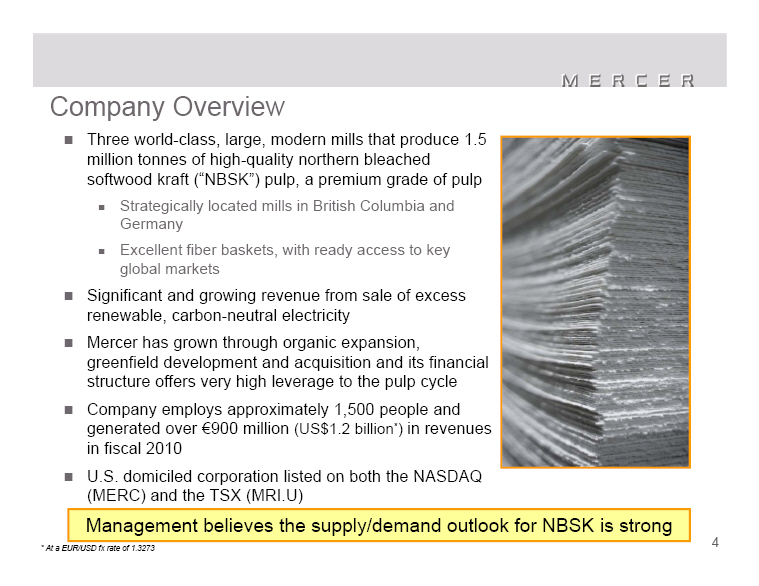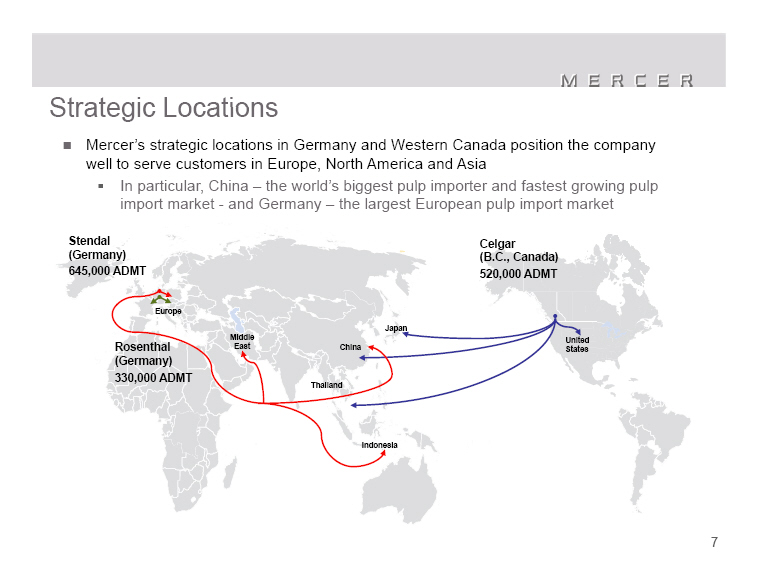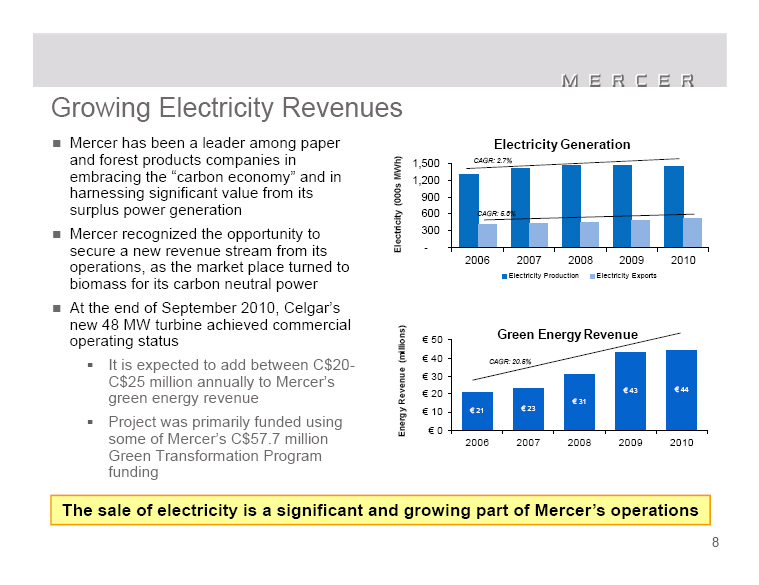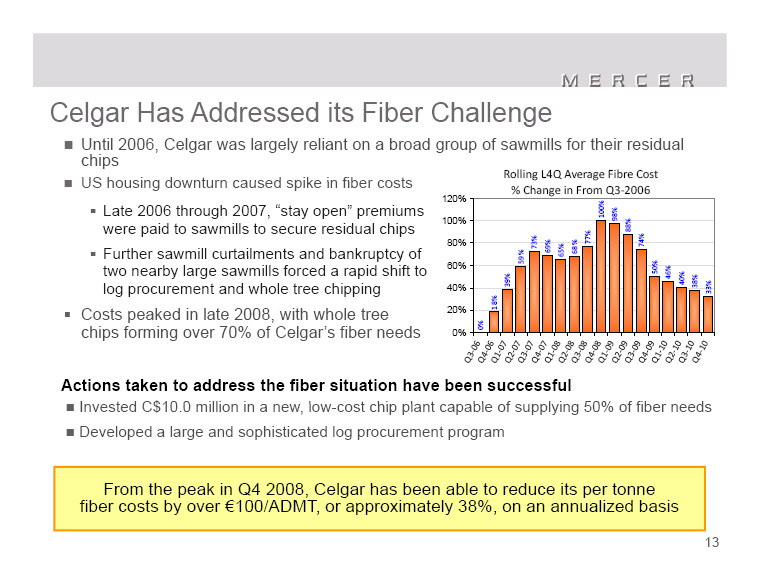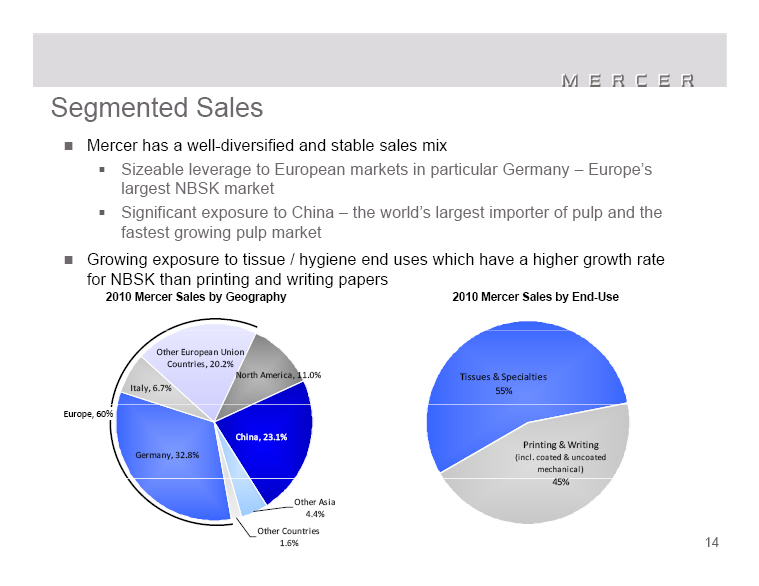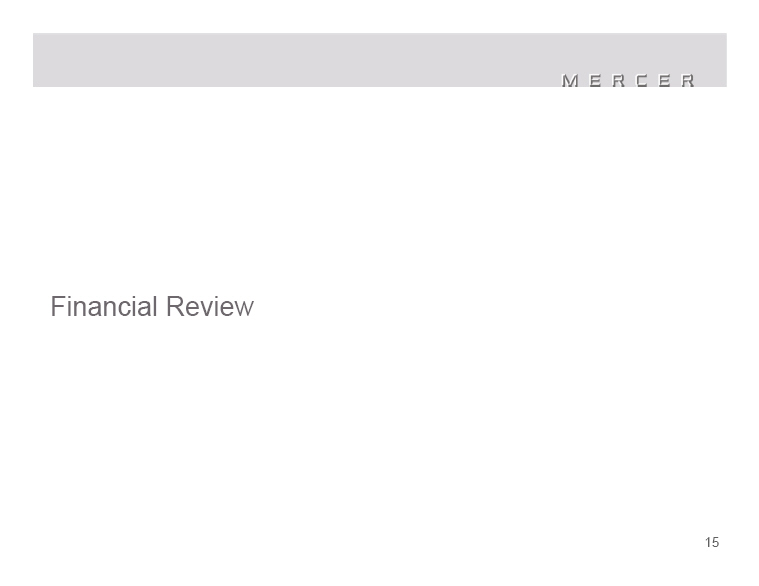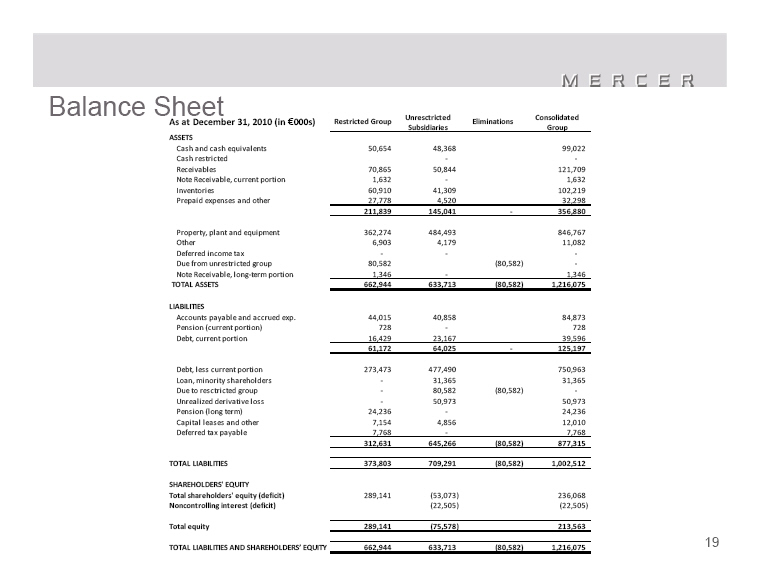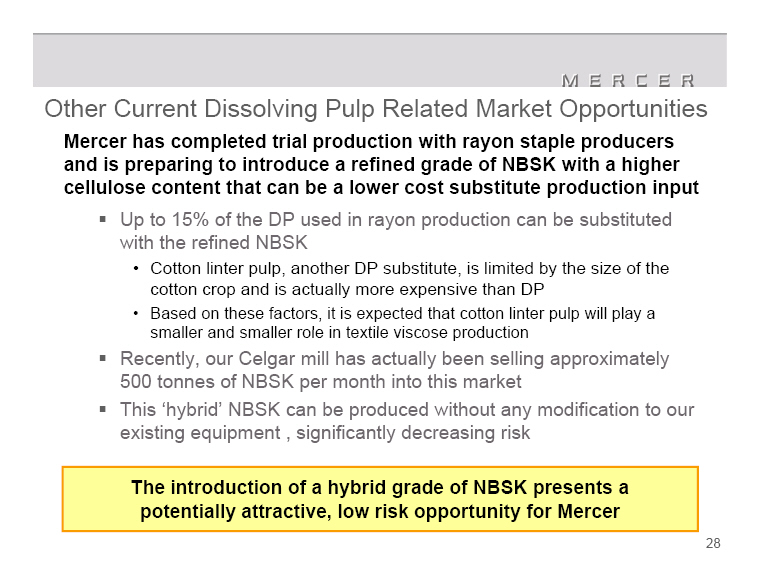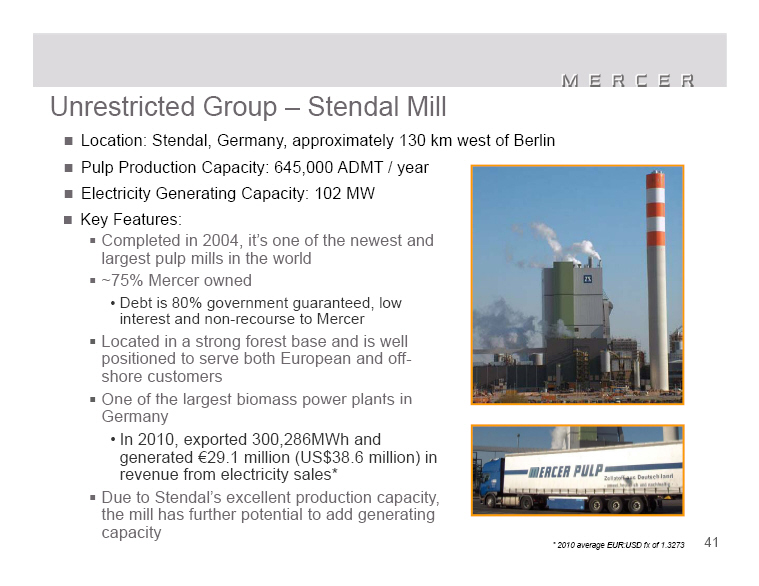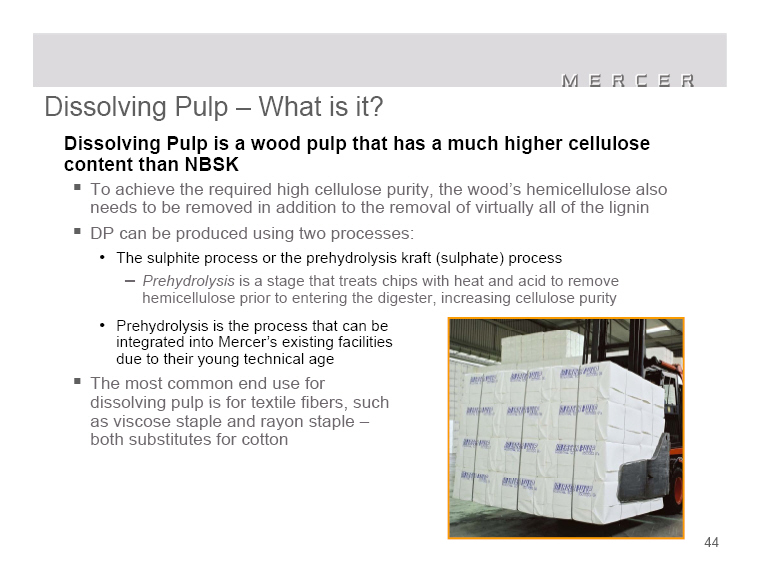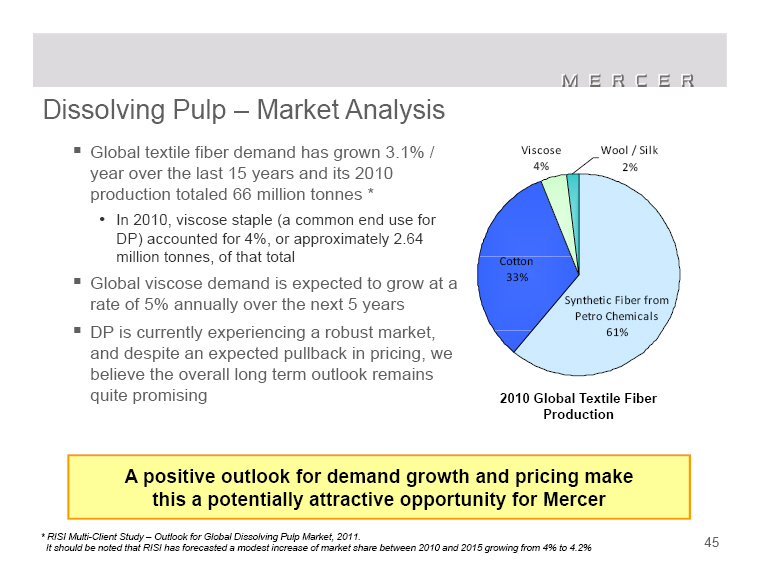Free signup for more
- Track your favorite companies
- Receive email alerts for new filings
- Personalized dashboard of news and more
- Access all data and search results
Filing tables
MERC similar filings
- 16 May 11 Mercer International Inc. Announces Redemption of All of Its Remaining 8.5% Convertible Senior Subordinated Notes Due 2012
- 12 May 11 Regulation FD Disclosure
- 5 May 11 Results of Operations and Financial Condition
- 22 Feb 11 Regulation FD Disclosure
- 14 Feb 11 Results of Operations and Financial Condition
- 21 Dec 10 Mercer International Inc. Announces Redemption of All of Its Remaining 9.25% Senior Notes Due 2013
- 26 Nov 10 Regulation FD Disclosure
Filing view
External links

